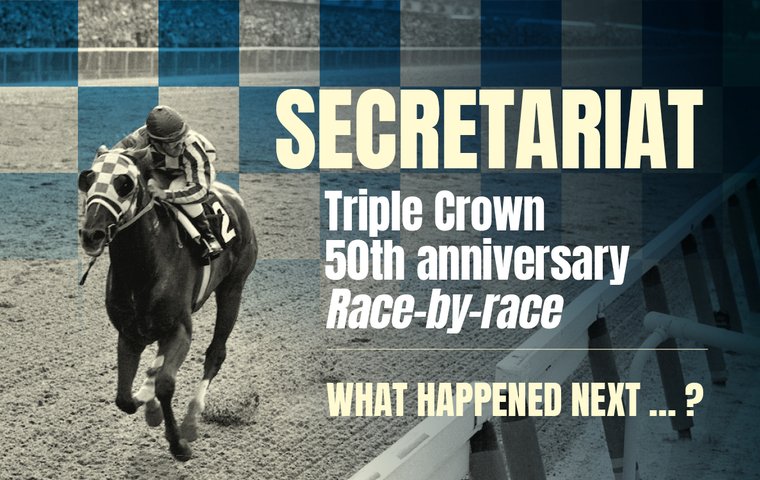
In the concluding part of his unmissable series detailing Secretariat’s Triple Crown season, Steve Dennis recalls the equine legend’s farewell to racing – and his subsequent life at stud
With his victory in the Canadian International, Secretariat had brought his racing career to a close. Big Red ran 21 times, won 16, hit the place three times, filled the show once, finished fourth on his debut. He won the Triple Crown, set several track records, some of which still stand, was twice honoured with the award for Horse of the Year, became a public figure and was soon to be elevated into the Hall of Fame.
And now there was only one more thing for him to do …
No-one wanted him to go
Saying goodbye is hard, even when that goodbye is inevitable, and has been a long time coming.
Everyone knew that Secretariat would be retired from racing at the end of 1973, the freight of that $6.08 million syndication valuation always a reminder that commerce would nose out competition in the photo-finish of life, but no-one wanted him to go.
He was not just a horse but the horse of a lifetime, of everyone’s lifetime. He was irreplaceable; there would be another Kentucky Derby winner, another Belmont winner, another Marlboro Cup winner, even another Triple Crown winner, but there would never be another Secretariat, another horse like this. It was goodbye to not just a horse but an ideal, a yardstick, the embodiment of a dream.
But he had to go. Eight days after he had galloped across the line in the Canadian International, Secretariat was given his final fanfare farewell at Aqueduct, where he had made his debut almost exactly 16 months earlier, where he had broken his maiden, where he had won the Bay Shore and the Gotham and lost the Wood Memorial.
It was a cold, crisp November afternoon, yet the temperature was not the reason for all the bright, watery eyes and damp cheeks around the winner’s circle at the Big A. The ceremonies were squeezed in between the second and third races, a reminder that life would have to go on, that there was always another race coming up.
One last valedictory canter
Everyone was there. Penny Chenery gave a speech. Lucien Laurin stood mournfully with his hands in his pockets, no doubt feeling older than his years. Ron Turcotte was lifted aboard Secretariat for one last valedictory canter, and the crowd cheered as they always did when the red horse came running down the stretch for the final time.
“It was a very sad day for me and for Secretariat,” said Turcotte. “He was disappointed that he wasn’t going to run that afternoon. He acted very irritated when I rode him back to be unsaddled in the winner’s circle without having had a good run around the track.”
See? Even Secretariat didn’t want to go. But the third race was scheduled. It was time. The band played Auld Lang Syne, and his groom Eddie Sweat – who had been closer to the horse than anyone, had been his valet, his confidant, his friend – led Secretariat off the track, away from his old life, towards his new one.
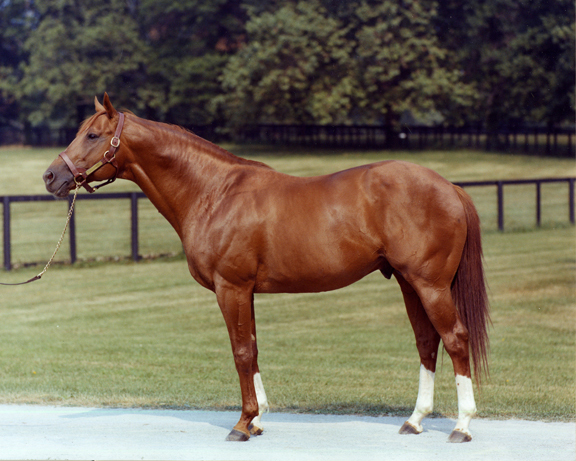 A week later, Secretariat was at Claiborne Farm in Kentucky, standing in the stall where his sire Bold Ruler had stood before him, his nameplate newly gleaming on the door.
A week later, Secretariat was at Claiborne Farm in Kentucky, standing in the stall where his sire Bold Ruler had stood before him, his nameplate newly gleaming on the door.
There are other nameplates on that door now, his successors Easy Goer, Unbridled and the incumbent Runhappy, but on that chilly evening it was all about Big Red, the running sonofabitch, the tremendous machine.
He shuffled his feet through the deep straw in his new home and listened to the unfamiliar night noises, waiting for whatever would come next.
What did come next?
Secretariat’s stud career could be called a success, but not on the scale that had been hoped.
It was impossible for him to justify the stratospheric expectations held for him as a stallion, and very often the very best horses on the track are unable to pass on their supernatural talent to their offspring.
Frankel has done so, Brigadier Gerard could not. Mill Reef did, Cigar was infertile. Arrogate has started very well and Flightline is still a blank page. There are few certainties on the racecourse and none at all in the breeding shed.
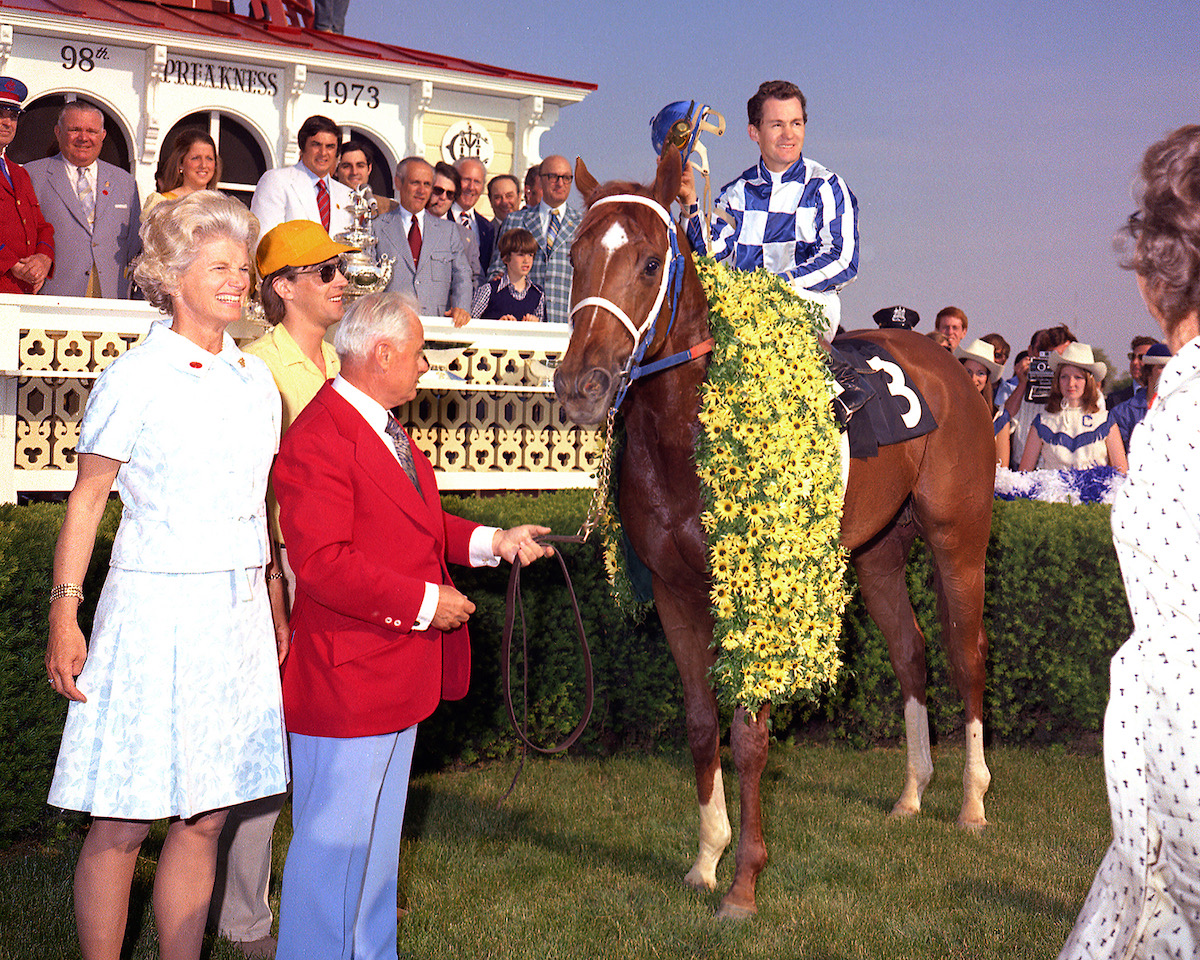 He sired a G1 winner from his first crop – the otherwise undistinguished Dactylographer, who won the 1977 William Hill Futurity on turf at Doncaster – and another of his first-crop colts became the first yearling to fetch more than $1m at the sales. His name was Canadian Bound, and he couldn’t run a yard. Caveat emptor, as they say, usually with a smirk.
He sired a G1 winner from his first crop – the otherwise undistinguished Dactylographer, who won the 1977 William Hill Futurity on turf at Doncaster – and another of his first-crop colts became the first yearling to fetch more than $1m at the sales. His name was Canadian Bound, and he couldn’t run a yard. Caveat emptor, as they say, usually with a smirk.
There were, though, sufficient highlights to give his second career heft, notably General Assembly (1979 Travers) and multiple G1-winning 1986 Horse of the Year Lady’s Secret, and also the nearest thing to a chip off the old block in the dazzling Risen Star, who ran third in the 1988 Kentucky Derby, won the Preakness and then went on to the Belmont, where he rendered an eerie echo of his sire’s extraterrestrial display 15 years earlier.
‘He looks like his daddy out there’
Risen Star barrelled clear to win by 14¾ lengths, stopping the clock in 2m26⅖s, the fourth-fastest Belmont and the fourth-widest winning margin on record. The resemblance sent a shiver down the spine, hurried along its way by the stretch call from track announcer Dave Johnson.
“Past the eighth-pole, Risen Star drawing away, he looks like his daddy out there … Risen Star takes the Belmont just like his daddy Secretariat did.”
Secretariat’s sons did not provide him with a legacy but his daughters have done enough to keep his name in the pedigree pages forever, producing breed-shaping sires such as Storm Cat and AP Indy. As a curiosity, his daughter Betty’s Secret was the dam of 1984 Derby winner Secreto and triple Champion Hurdle winner Istabraq.
Moreover, in the same year as Secreto’s Epsom heroics, Secretariat’s grandson Chief’s Crown won the first race at the first Breeders’ Cup and was named champion juvenile colt. By coincidence, he was trained by Roger Laurin, son of the sainted Lucien.
The last remaining equine strand connecting Secretariat to the present day is the ancient Maritime Traveler, the only extant offspring of Big Red, a living fossil with his 34th birthday rapidly approaching. Patricia McQueen, faithful cataloguer of the dwindling tribe of Secretariat, meets the old boy here.
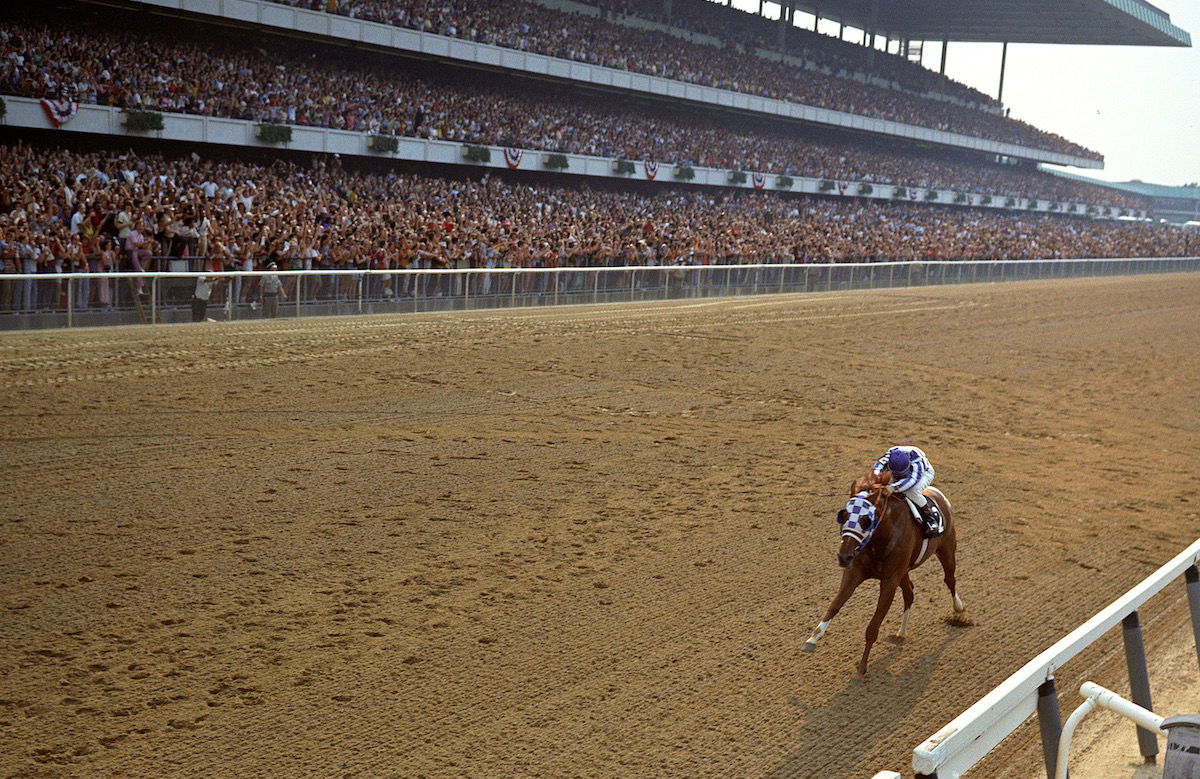 Of Secretariat’s humans, only jockey Ron Turcotte, 82, is still with us. Turcotte has used a wheelchair ever since his riding career was ended by a fall in July 1978, in which he was paralysed from the waist down.
Of Secretariat’s humans, only jockey Ron Turcotte, 82, is still with us. Turcotte has used a wheelchair ever since his riding career was ended by a fall in July 1978, in which he was paralysed from the waist down.
He has been a frequent, eloquent commentator and contributor to feature articles during this 50th anniversary year of those derring-do deeds, a man greatly sought after for his status as the keeper of the flame.
Luckiest guy in the world
“He was the greatest racehorse who ever lived, and I was the luckiest guy in the world to be on his back,” he once said.
Lucien Laurin died in June 2000, aged 88. Penny Chenery died in September 2017 at the age of 95. Eddie Sweat died too young at 59, in April 1998. Secretariat was put down on October 4, 1989 at Claiborne Farm, after suffering from the painful hoof condition laminitis. He was 19.
He was buried at the farm, and there are always flowers on his grave left by people whose lives were changed by the way he could run, even though they may never have seen him in the flesh. Secretariat was that kind of horse, still is that kind of horse.
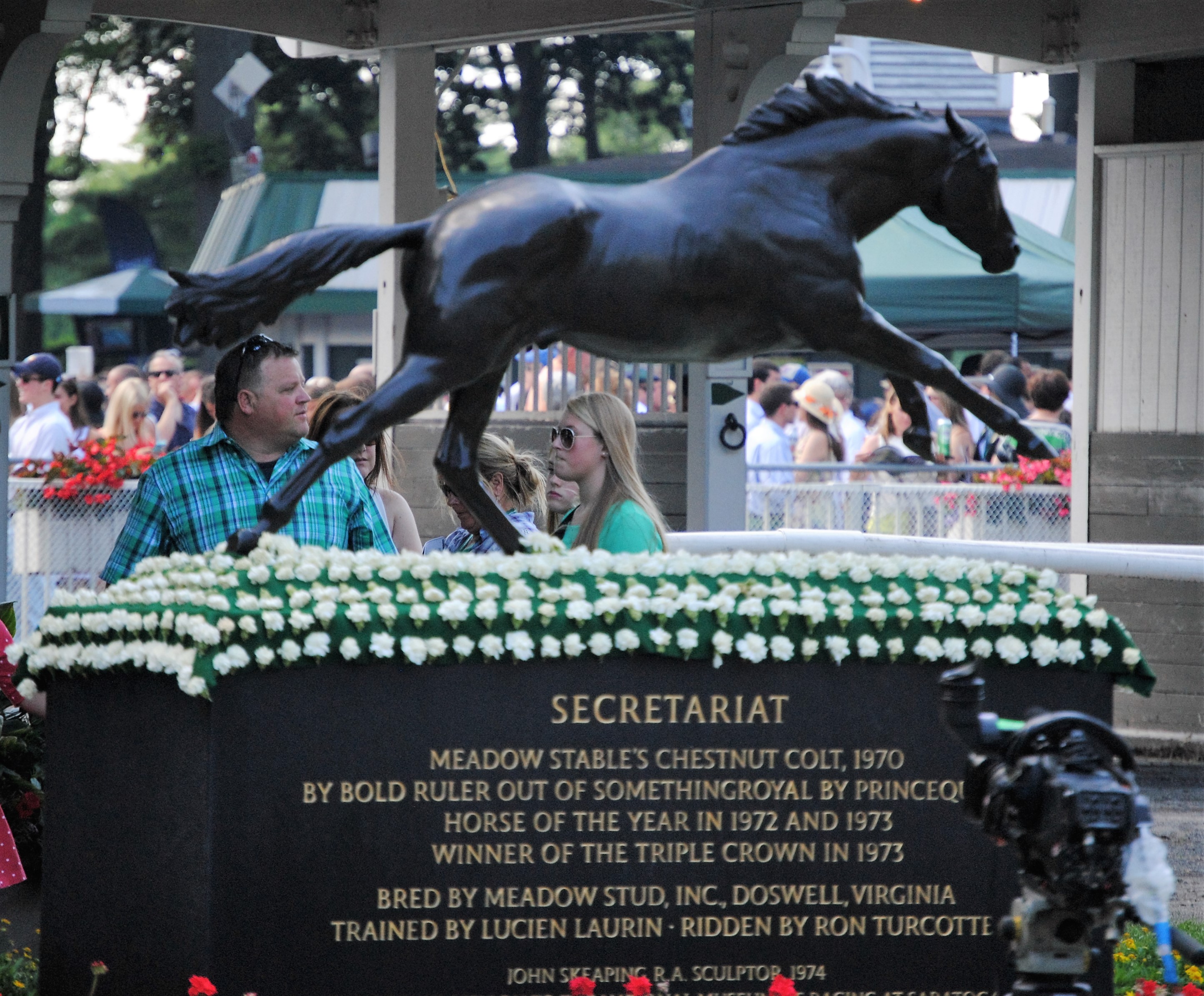 Tributes and honours once fell at his feet like autumn leaves, as deep as the straw for his Claiborne bed. Champion this, hero that, statues here, memorials there, memories everywhere.
Tributes and honours once fell at his feet like autumn leaves, as deep as the straw for his Claiborne bed. Champion this, hero that, statues here, memorials there, memories everywhere.
At the close of the century, the broadcaster ESPN ranked him 35th on its list of the 100 greatest North American athletes, just behind Lou Gehrig, just above Mickey Mantle, and he would have beaten them both to home plate.
‘He was all those things’
“You want to know who Secretariat is in human terms?” said Claiborne owner Seth Hancock. “Just imagine the greatest athlete in the world. The greatest. Now make him six-foot-three, the perfect height. Make him real intelligent and kind. And on top of that, make him the best-lookin’ guy ever to come down the pike. He was all those things as a horse.”
In the warm and roseate glow of all these attributes, where does Secretariat stand in the pantheon of his predecessors and peers? Comparisons are almost impossible, but in the very well-regarded book A Century of Champions, by John Randall and Tony Morris, a paean of hard-boiled assertion rather than hyperbolic acclaim, Secretariat was declared to be the US Horse of the Century.
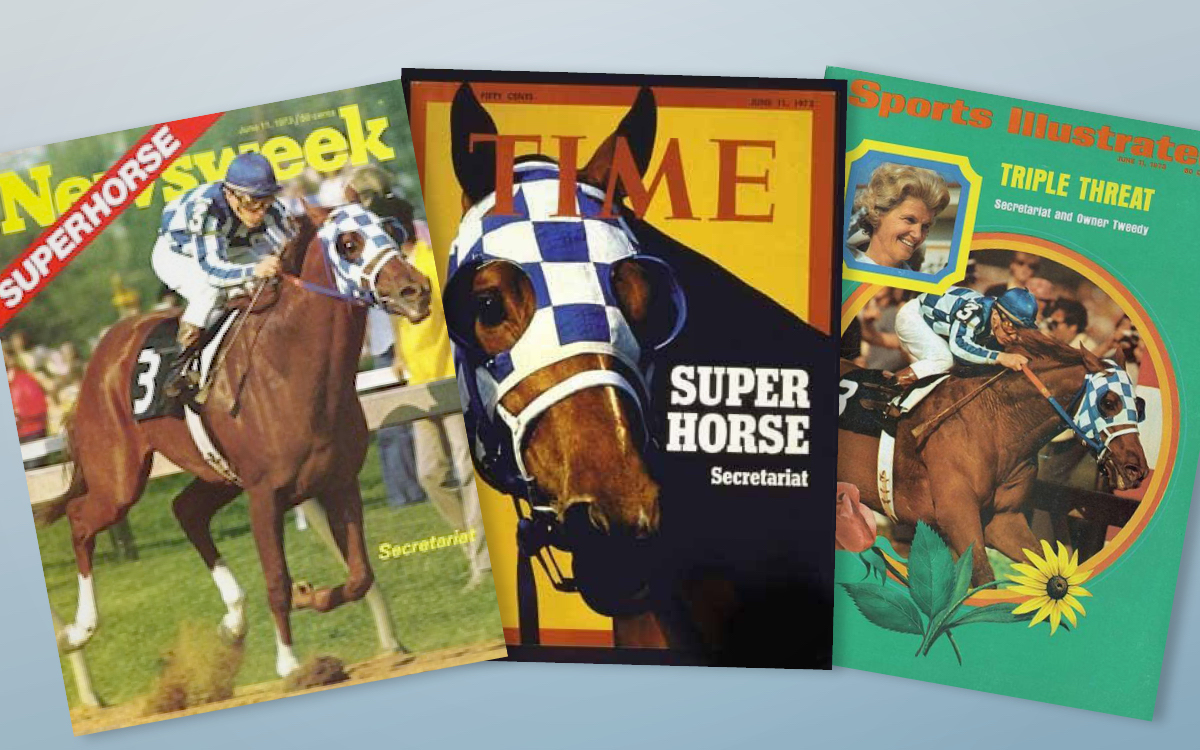 Thus he stands above all the all-time greats, above Citation, Spectacular Bid, Seattle Slew, Native Dancer, Affirmed and also Man o’ War, the other usual suspect for the mantle of ‘best-ever’ but who never faced a similar depth of competition. As for this century, it is much too early to tell.
Thus he stands above all the all-time greats, above Citation, Spectacular Bid, Seattle Slew, Native Dancer, Affirmed and also Man o’ War, the other usual suspect for the mantle of ‘best-ever’ but who never faced a similar depth of competition. As for this century, it is much too early to tell.
As a racehorse, Secretariat had everything, and with the innate generosity of the breed he gave it all back to us a thousand-fold. He defies the laws of physics – on the track he was the irresistible force, as a talisman, a symbol, a benchmark he is also the immovable object, his status unaltered by the usual cruelties of time.
He is racing’s north star; every year the residual heat of his remarkable brilliance takes a little longer to reach us, but his light will never go out.
For they wrote about him 50 years ago, we write about him now, and in another 50 years someone else will be writing about him all over again, adding another layer of lustre to a glory that cannot fade.
• Buy race programmes and assorted memorabilia at the dedicated Secretariat website at secretariat.com
• Children of Secretariat: click here for links to all the articles in Patricia McQueen’s hugely popular series
Race 10: ‘He definitely, definitely should not have run in the Woodward’
Race 9: ‘It was a field of champions and he was just toying with them’ – Ron Turcotte marvels
Race 7: ‘A lavishly paid breeze, a three-inch putt, a slam dunk, a gentle volley into an open court’
Race 2: ‘I think we should send this horse today’ – time for a change of tactics in the Gotham
Race 1: ‘I made a mistake’ – more trouble than expected as Secretariat sets out for greatness
View the latest TRC Global Rankings for horses / jockeys / trainers / sires


